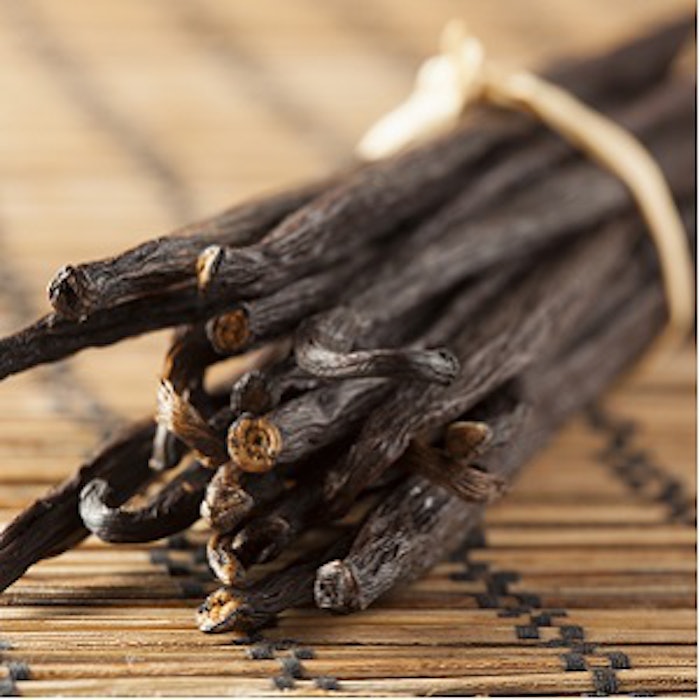
The flavor industry, in particular, is especially interested in understanding the formation of the typical vanilla flavor complex from the tasteless precursors present in the green bean, and much effort has gone into the analysis of the volatile components of the cured brown vanilla bean.
Of specific interest to us was the elucidation of the fate of the vanillin during the traditional curing process, once it has been liberated via endogenous enzymatic hydrolysis of the corresponding glycoside, glucovanillin. It is known that physical losses occur during a number of the steps that are inherent to the traditional fermentation and drying process, and chemical losses occur via oxidative conversion into structurally related materials during the monthlong curing process.2 Other chemical losses are due to its participation in the Maillard reaction, a process that gives the cured beans their typical dark brown color.
At a glance …
Peroxidase efficiently catalyzes the dimerization of vanillin. The product, divanillin, can be detected in cured vanilla beans at the ppm level. Divanillin itself displays very interesting taste properties and positively influences creamy, fatty mouthfeel notes.










